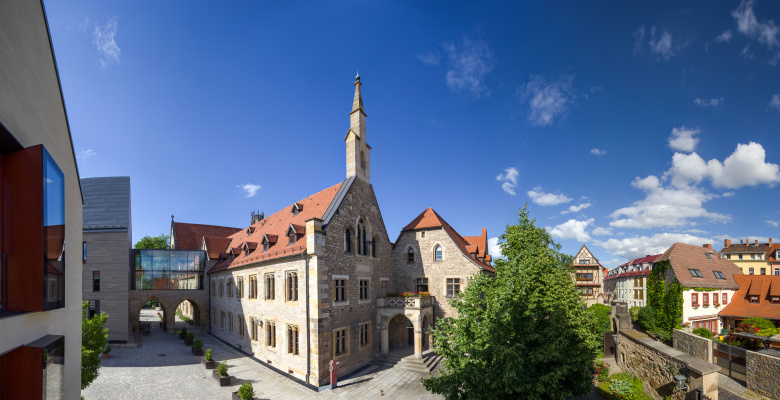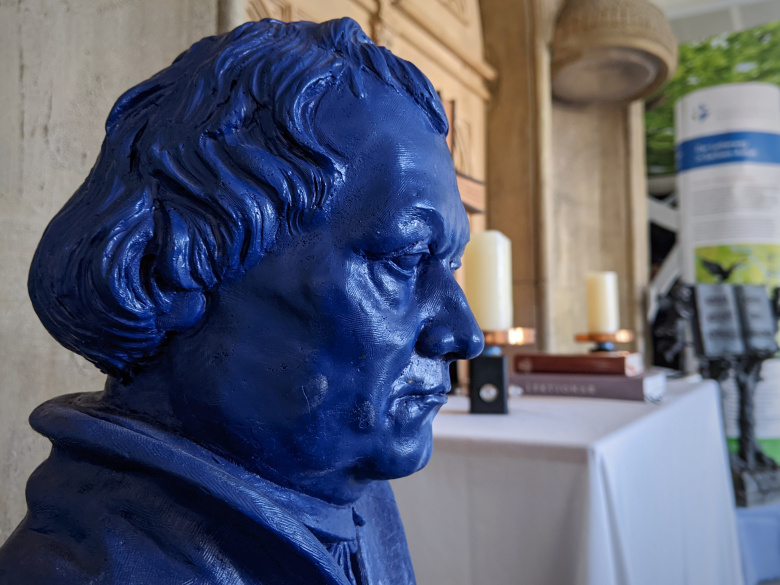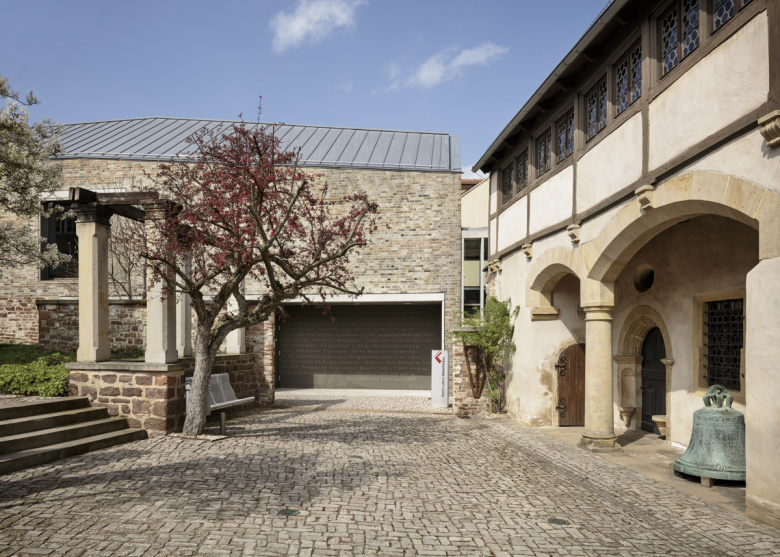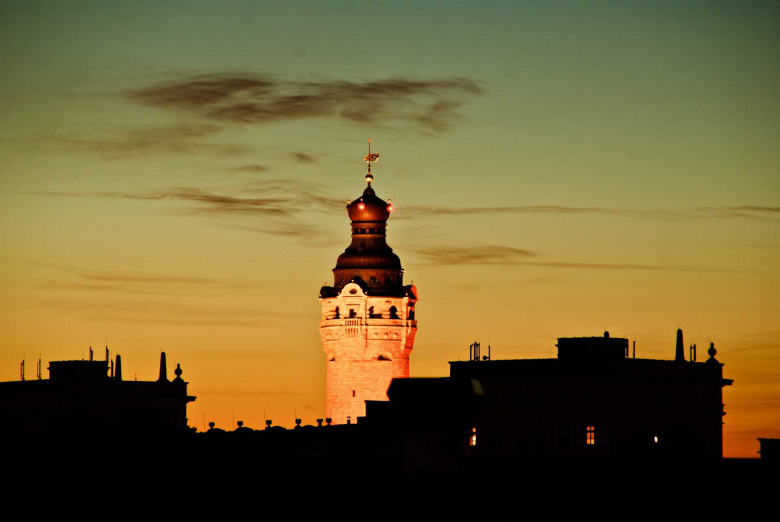In summer 1546 Emperor Charles V was preparing to go to war against the Protestant princes. What is today known as the Schmalkaldic war became the first religious conflict on German soil and culminated with the battle of Mühlberg. It took place on April 24, 1547 and ended with a complete defeat of the Schmalkaldic army and the capture of the Saxon Elector. At Mühlberg, Charles V. reached the apex of his power. With a permanent exhibition on the battle of Mühlberg the Museum Mühlberg 1547 offers fascinating insights into the play of powers in the early 16th century. The modern display was reopened in 2015 and gives extensive background on the warring parties as well as on the soldiers who took part in the battle. Various media installation allow visitors to look at the conflict from different perspectives. The museum is part of the Central German Places of the Reformation and was awarded the European Heritage Label. It currently carries out essential preparations to add Charles’ V. Central German route to the Network of European Cultural Routes of Charles V.
The museum is situated in the historical Popstei, where the provost of Mühlberg abbey made his home. The building is a superb example for the late gothic architecture in Central Germany. It was built in 1530 and served as the home and the administrative office of the provost of Mühlberg abbey, a Cistercian nunnery. The building was placed between the abbey and the nunnery and embellished with two magnificent gothic wimpergs. Its interior was decorated with splendid murals and frescoes which were rediscovered during a recent restauration and made partially visible again. Later the building was sold to local gentry, served as a distillery and eventually became a museum in 1926.
At this point, external content (map/ OpenStreetMap) is displayed if you allow it: Privacy settings
Related members:
Additional touristic information
Information
Short info
Mühlberg is situated in the Southwest of Brandenburg on the banks of the river Elbe. Administratively it belongs to the district Elbe-Elster. Nearby towns are Torgau (26 km), Wittenberg (75 km), and Dresden (78 km).
Geography
While the town of Mühlberg has 3,800 inhabitants, the district Elbe-Elster is home to 104,400 residents on a territory of 1,899.54 square kilometres.
Sights
Mühlberg is situated on the river Elbe, one of the major rivers of Central Europe. After having passed the sandstone defiles of the Elbe Sandstone Mountains and the city of Dresden, the Elbe enters on its long journey across the North German Plain passing along the former border of East Germany, touching Mühlberg, Torgau, Wittenberg, Magdeburg, Tangermünde, and Hamburg on its way.
Accessibility
Road transport
Mühlberg is well accessible by car and close to the national highways 182 and 183.
Train
The next train station is in Bad Liebenwerda, 18 kilometres away. During the summer months the museum is connected by bus to Bad Liebenwerda train station. Please contact the museum for timetables and availabilities.
Bus transport
Please check http://fahrinfo.vbb.de. Additionally, during the summer months the museum is connected by bus to Bad Liebenwerda train station. Please contact the museum for timetables and availabilities.
Airport
The next airports are Dresden (70 km), Leipzig (90 km), and Berlin (140 km). There are several small airfields in the area suitable for small aircrafts. Please check http://www.lbv.brandenburg.de/.
Our heritage
Historic buildings
The museum is situated in the historical Popstei, where the provost of Mühlberg abbey made his home. The building is a superb example for the late gothic architecture in Central Germany. It was built in 1530 and served as the home and the administrative office of the provost of Mühlberg abbey, a Cistercian nunnery. The building was placed between the abbey and the nunnery and embellished with two magnificent gothic wimpergs. Its interior was decorated with splendid murals and frescoes which were rediscovered during a recent restauration and made partially visible again. Later the building was sold to local gentry, served as a distillery and eventually became a museum in 1926.
Natural attractions
Mühlberg is situated on the river Elbe, one of the major rivers of Central Europe. After having passed the sandstone defiles of the Elbe Sandstone Mountains and the city of Dresden, the Elbe enters on its long journey across the North German Plain passing along the former border of East Germany, touching Mühlberg, Torgau, Wittenberg, Magdeburg, Tangermünde, and Hamburg on its way.
Availability
Museum Mühlberg 1547
Klosterstraße 9
04931 Mühlberg
Phone 0049 35342 837002
E-Mail museum-muehlberg1547@lkee.de
Web museumsverbund-lkee.de
Opening hours
April – September Tuesday – Sunday 10.00 am – 6.00 pm
October – March till 5.00 pm
Tickets 4.00 Euro, reduced fare 2.00 Euro
Family ticket 10.00 Euro
Combined ticket for all 4 museum of the Museum Association 12.00 Euro
Tourist info
Guided tours upon notification in advance. The museum offers hot and cold beverages and snacks in a small café. Visitors should make sure to see the remains of Mühlberg abbey, only a few steps away from the museum (not included in admission fare and opening hours).
All sights in this country
-
All Saints’ Church →
Wittenberg / Germany

pixabay -
Ancestral seat of the family Luther →
Möhra / Germany

Pfarramt Möhra -
Castle Allstedt →
Germany

René Grusche, Sarah Smith -
Church of St. Andrews →
Lutherstadt Eisleben / Germany

Kirchenkreis Eisleben, Sarah Smith -
Convent Donndorf →
Donndorf / Germany

-
Cranach Courtyards →
Lutherstadt Wittenberg / Germany

cranach-hoefe.de -
Evangelic Augustiner Monastery →
Erfurt / Germany

Augustinerkloster Erfurt -
Luther House →
Lutherstadt Wittenberg / Germany

-
Luther trail →
Lutherstadt Wittenberg / Germany

-
Luther Waypoint →
Reinhardsbrunn/ Friedrichroda / Germany

-
Luther’s Birthplace →
Lutherstadt Eisleben / Germany

-
Luther’s Death House →
Lutherstadt Eisleben / Germany

-
Luther’s Parents’ Home →
Mansfeld / Germany

-
Melanchton House →
Lutherstadt Wittenberg / Germany

-
Reformation Related Test Sight →
Martintown / Germany

-
ReiseMission GmbH →
Leipzig / Germany

-
St. Anne’s Church and former Priory of the Hermits of Augustine →
Germany
-
St. Mary´s Church →
Lutherstadt Wittenberg / Germany

Lutherstadt Wittenberg Marketing GmbH/Johannes Winkelmann -
St. Peter and Paul’s Church →
Lutherstadt Eisleben / Germany

Karsten Hoerenz, Sarah Smith -
Wartburg →
Eisenach / Germany

